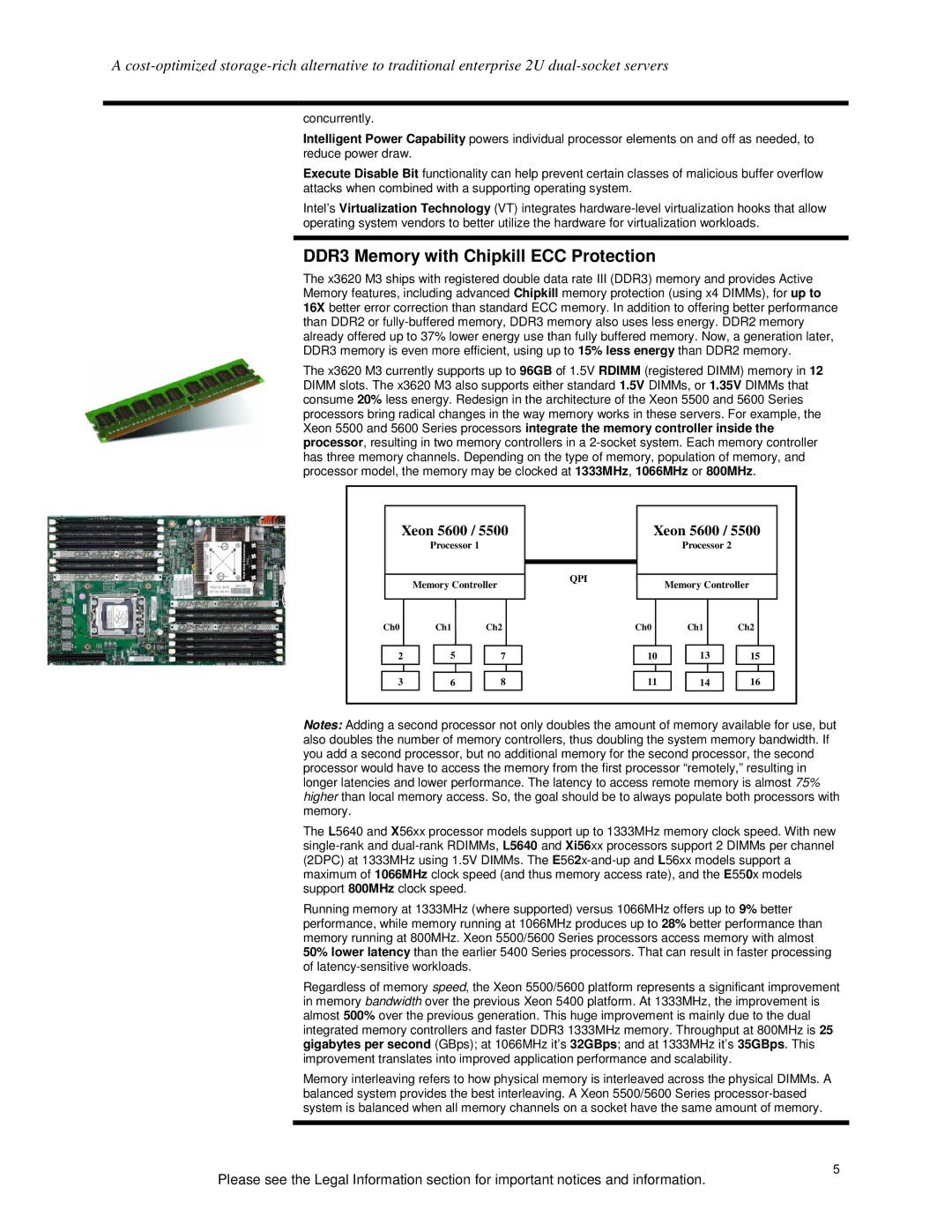X3620 M3 specifications
The IBM X3620 M3 is a robust 2U rack server that debuted as part of IBM's System X portfolio. It is designed to meet the demands of various workloads, from virtualization to database hosting and business applications. With its emphasis on reliability, performance, and expandability, the X3620 M3 has garnered attention from small to medium-sized businesses as well as enterprise users.One of the standout features of the X3620 M3 is its dual-socket architecture, which supports Intel Xeon 5600 series processors. This configuration allows for impressive performance capabilities, with the ability to install up to two six-core processors, giving enterprises the horsepower needed for demanding applications. Additionally, the server's memory support can extend up to 192 GB with DDR3 RAM, enabling high-speed data processing and multitasking efficiencies. This capacity allows the X3620 M3 to handle multiple virtual machines simultaneously without sacrificing performance.
In terms of storage, the IBM X3620 M3 offers flexible options. The server is equipped with up to eight hot-swap 2.5-inch or 3.5-inch drive bays, supporting Serial ATA (SATA) or SAS drives. This not only enhances the system's capability for storage expansion but also provides redundancy and increased data protection through RAID configurations. The integrated SAS RAID controller bolsters data integrity, ensuring that critical enterprise information remains safe.
The X3620 M3 also prioritizes versatility and efficiency. Its energy-efficient design incorporates features such as AdvancedPM, which helps optimize power consumption based on workload demands. This can lead to significant cost savings for data centers focused on energy efficiency and carbon footprint reduction.
Furthermore, the server supports various network connectivity options, including Integrated Gigabit Ethernet ports and the ability to add additional networking cards. This ensures that the server can be tailored to meet specific networking needs, enhancing overall application performance.
In summary, the IBM X3620 M3 is an adaptable and high-performing rack server that addresses a wide range of business computing requirements. Its combination of powerful processing capabilities, extensive memory support, flexible storage options, and energy-efficient design makes it a favorable choice for businesses looking to maximize their IT investments. With its emphasis on reliability and performance, the X3620 M3 remains a competitive option in the ever-evolving server landscape.

